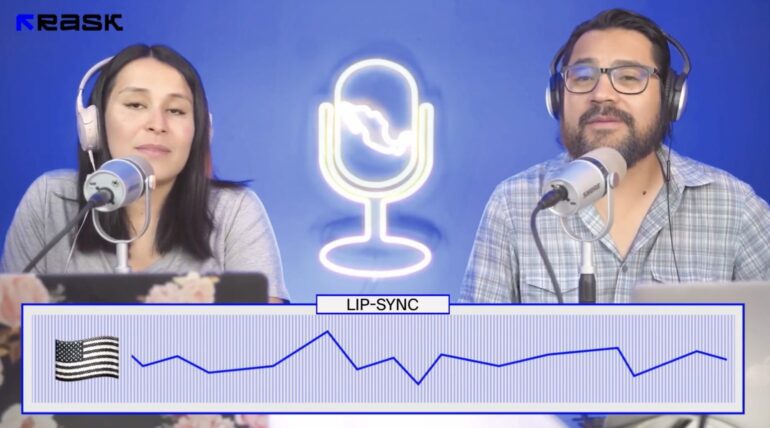TL;DR:
- Rask AI introduces a Multi-Speaker Lip-Sync feature for seamless content localization.
- Over 750,000 users can now translate content into 130+ languages with native fluency.
- Addressing the long-standing synchronization issue between lip movements and dubbed voices.
- Academic research highlights the importance of lip movements in second language comprehension.
- Rask AI’s technology utilizes generative adversarial networks (GANs) for realistic lip-syncing.
- The feature’s five-step process simplifies video translation and synchronization.
- Founder Maria Chmir sees this as an opportunity for content creators to expand their audience.
- Beta release available to Rask subscription customers.
Main AI News:
In a groundbreaking move, Rask AI, the trailblazing AI-powered video and audio localization tool, is proud to announce the launch of its latest innovation: the Multi-Speaker Lip-Sync feature. With this cutting-edge development, a staggering 750,000 users now have the power to effortlessly translate their content into a vast array of 130+ languages, achieving a level of fluency that rivals that of native speakers.
For far too long, a glaring lack of synchronization has plagued dubbed content, particularly in English-speaking countries. This misalignment between lip movements and voices has been a significant deterrent to the widespread adoption of dubbing. Research suggests that the harmonious blending of lip movements with localized content not only enhances realism but also significantly enhances its appeal to audiences.
A study conducted by the esteemed linguistics professor, Yukari Hirata, reveals that focusing on lip movements, as opposed to gestures, aids in the comprehension of challenging phonemic nuances in a second language. Additionally, lip reading plays a pivotal role in our overall language acquisition process.
With Rask’s groundbreaking new feature, a paradigm shift in localized content is now within reach, rendering dubbed videos remarkably lifelike. The AI engine automatically reconstructs the lower face by leveraging reference points, meticulously considering the speaker’s appearance and spoken words, resulting in a strikingly realistic end product.
So, how does it all work? It’s elegantly simple:
- Begin by uploading a video featuring one or more individuals.
- Translate the video into your preferred language.
- Execute the ‘Lip Sync Check’ by simply pressing a button, allowing the algorithm to assess the video’s lip sync compatibility.
- Once the video clears the check, proceed by clicking ‘Lip Sync’ and patiently await the result.
- Finally, download your perfectly synchronized video.
According to Maria Chmir, the visionary founder and CEO of Rask AI, this revolutionary feature stands to empower content creators to broaden their horizons and reach a wider audience. The AI seamlessly adapts lip movements, making characters appear as if they are speaking the language with native fluency.
Powered by generative adversarial network (GAN) learning, this technology comprises both a generator and a discriminator. These two components engage in fierce competition, each striving to outdo the other. The generator takes the reins in producing content, namely lip movements, while the discriminator assumes the pivotal role of quality control.
Excitingly, the beta release of this groundbreaking feature is now accessible to all Rask subscription customers, ushering in a new era of content localization.
Conclusion:
Rask AI’s Multi-Speaker Lip-Sync feature is a game-changer in the content localization market. Addressing the synchronization gap between lip movements and dubbed voices opens up new opportunities for content creators to reach global audiences with greater authenticity. This innovation, backed by GAN technology, is poised to reshape how localized content is produced and consumed, making it a pivotal development in the industry.

